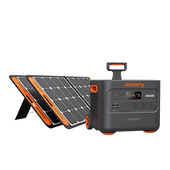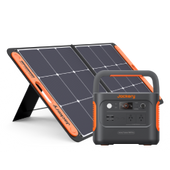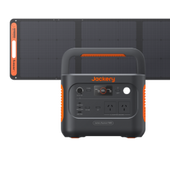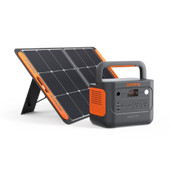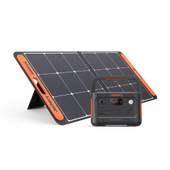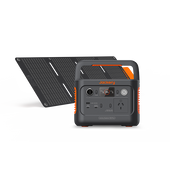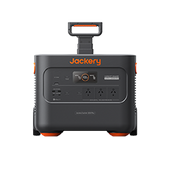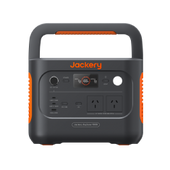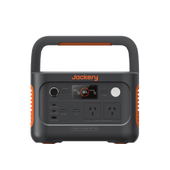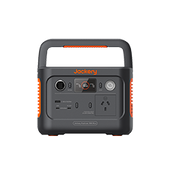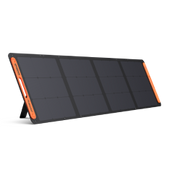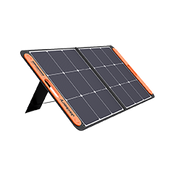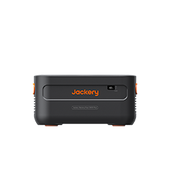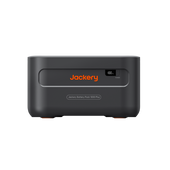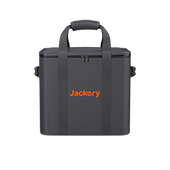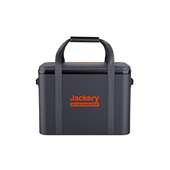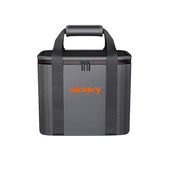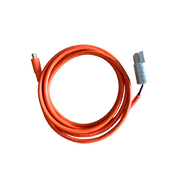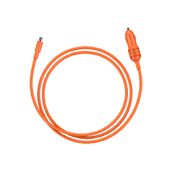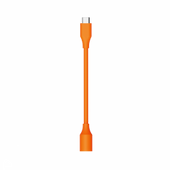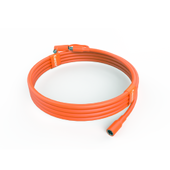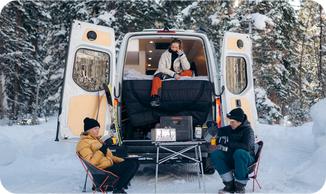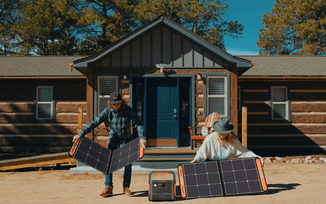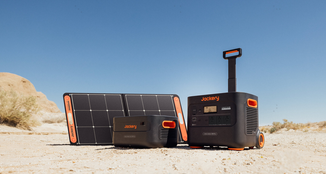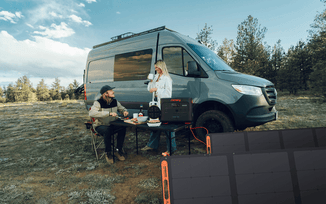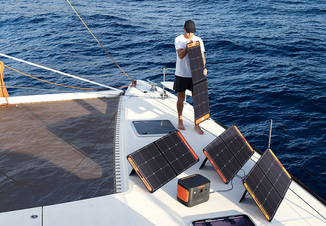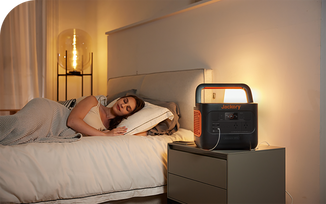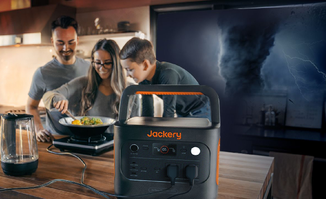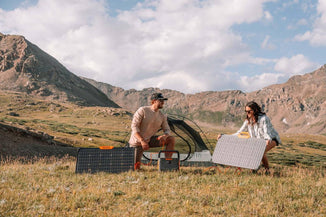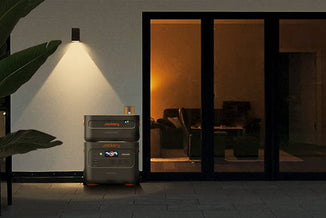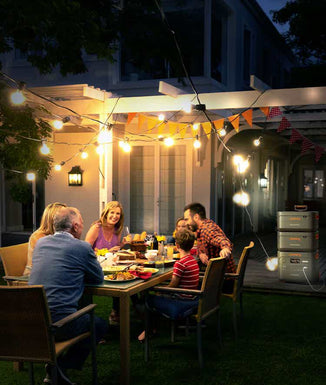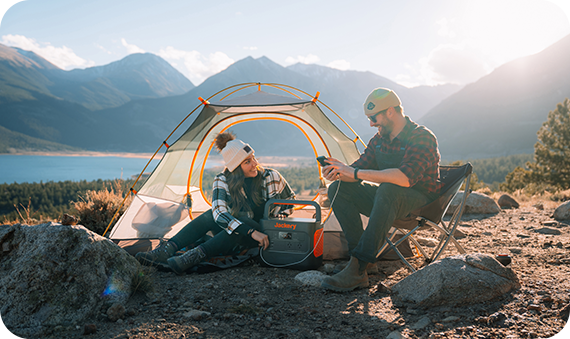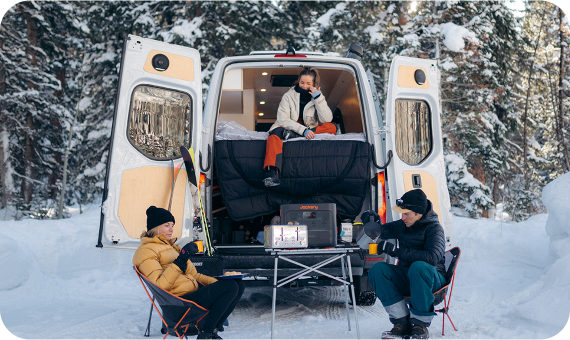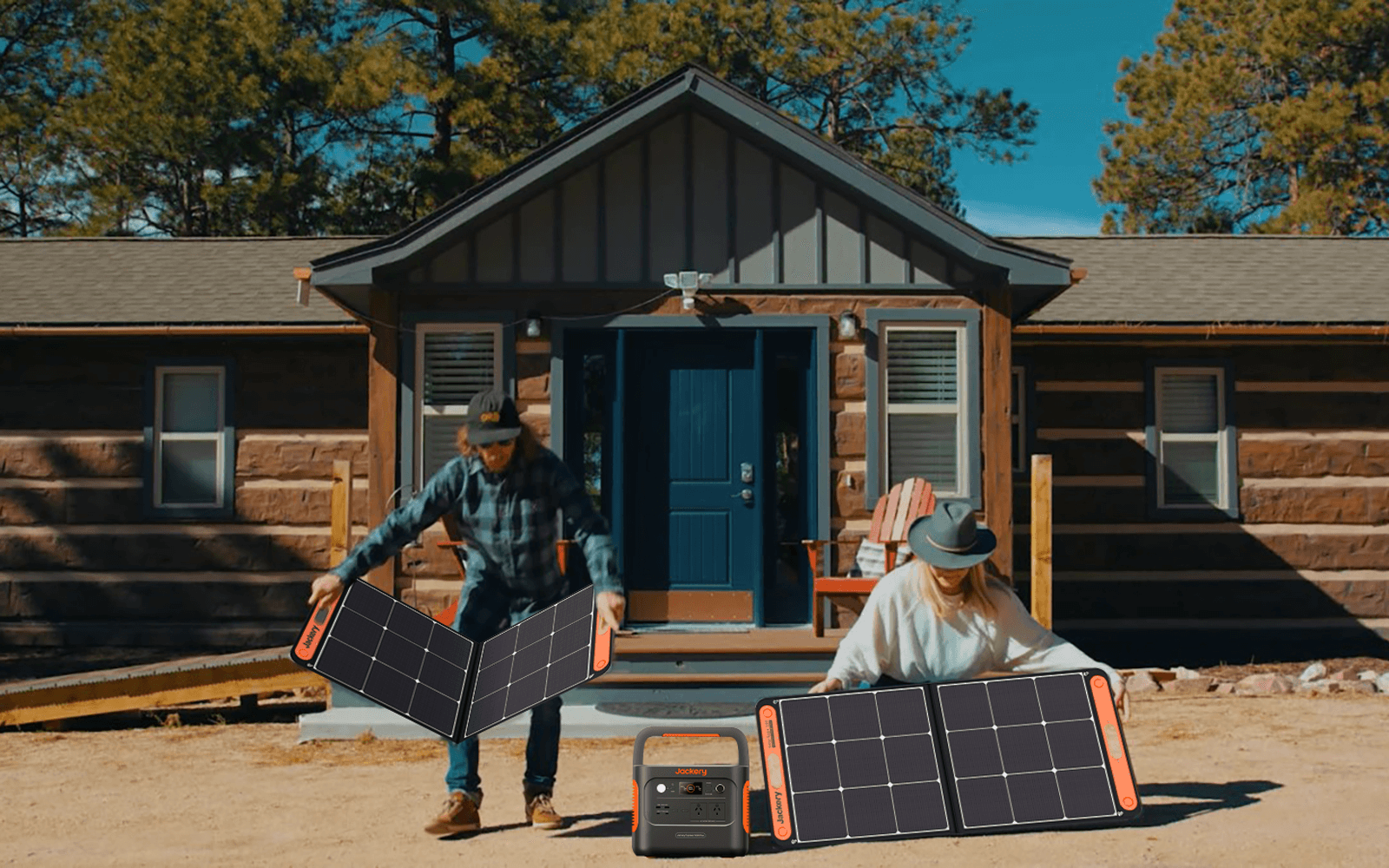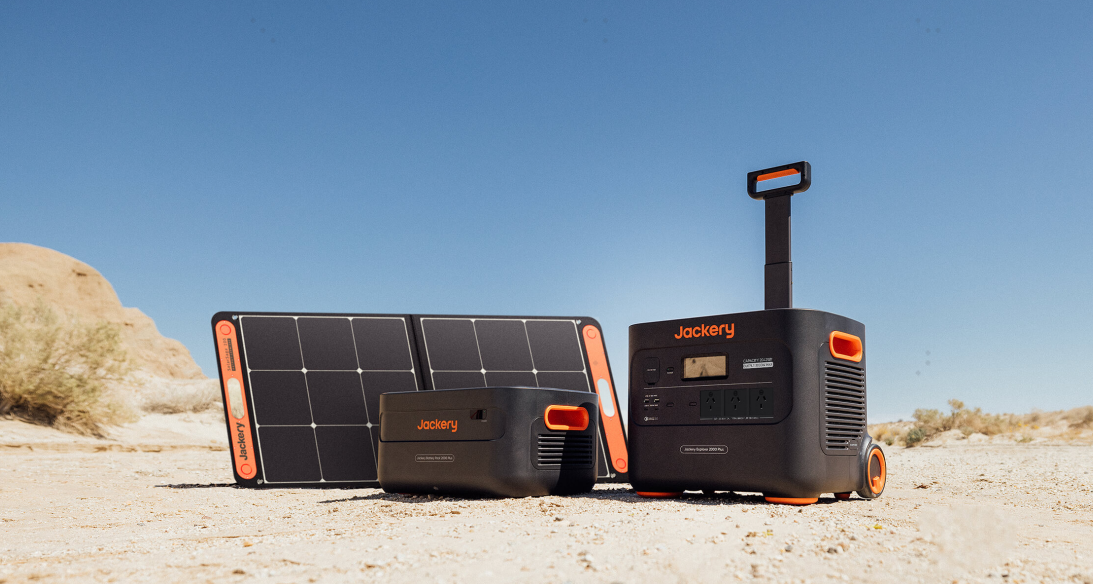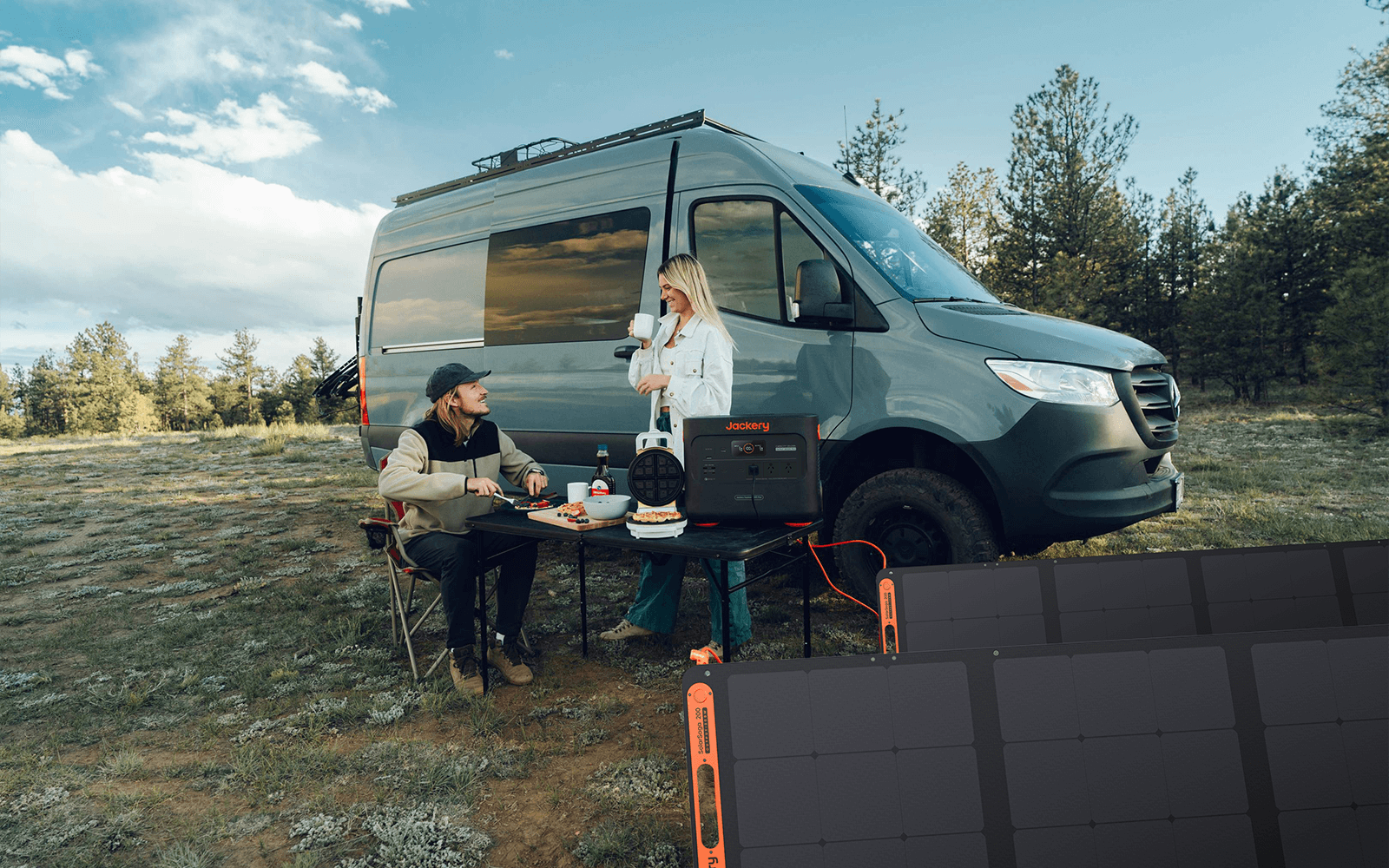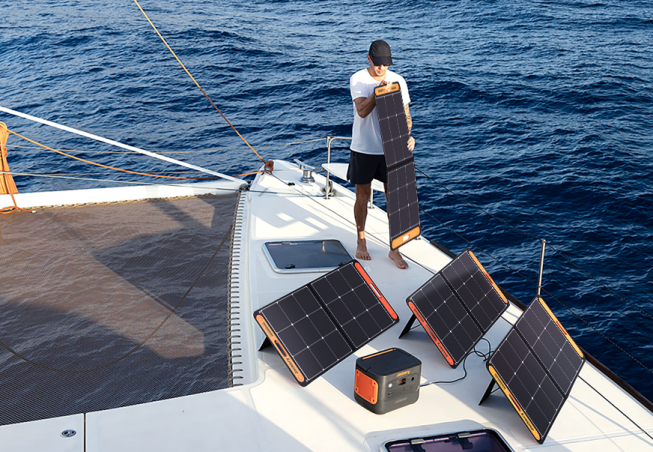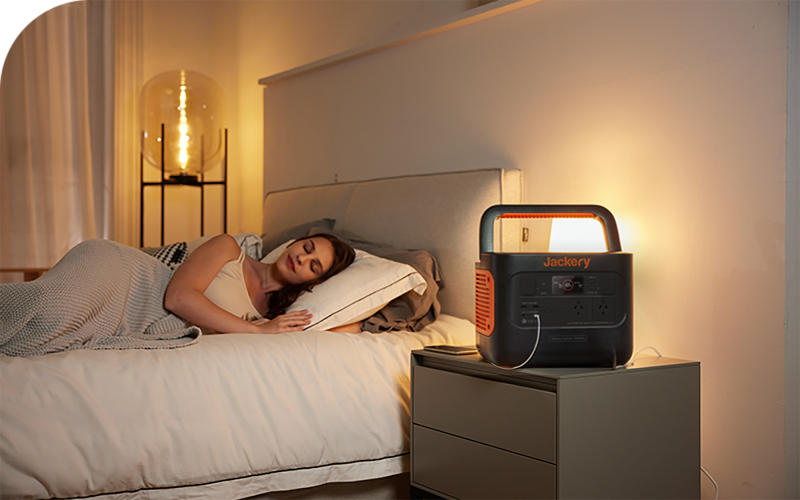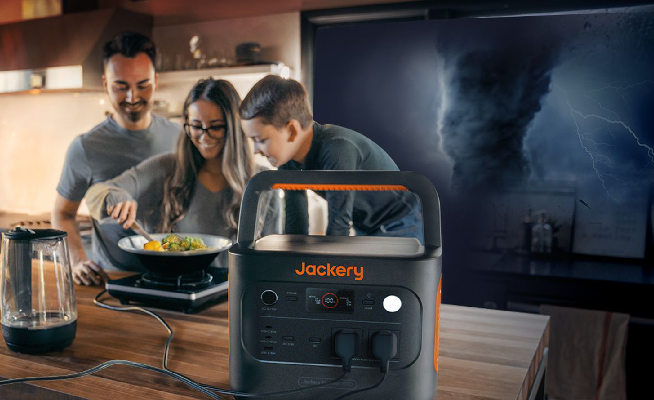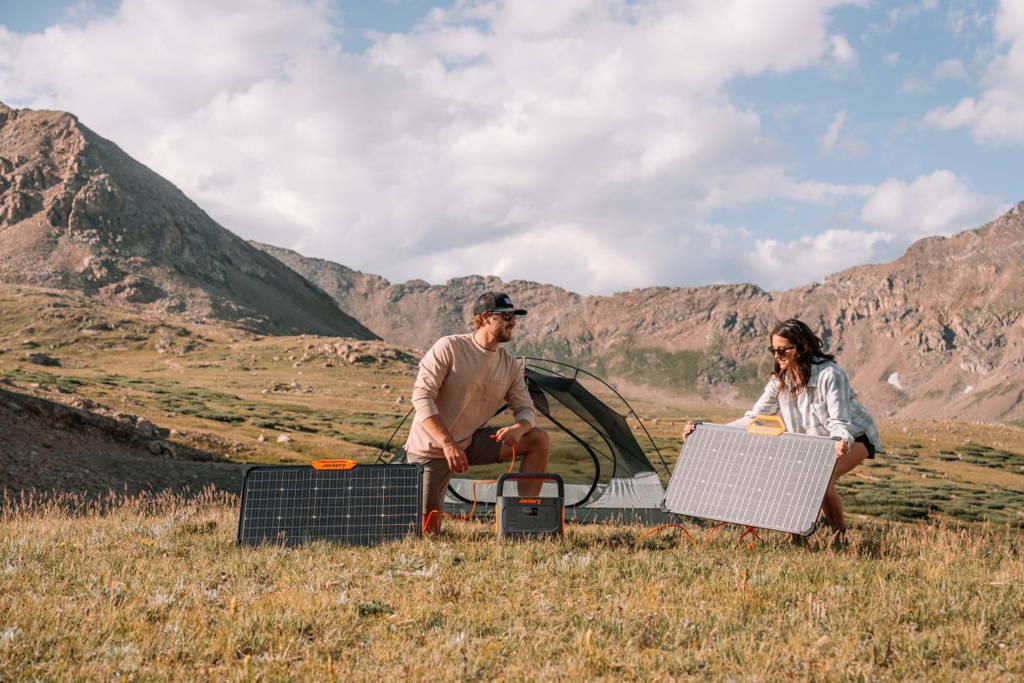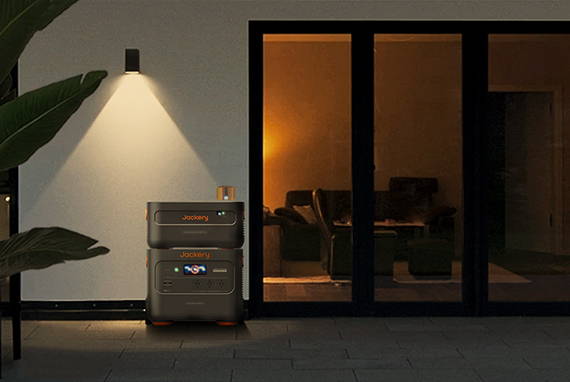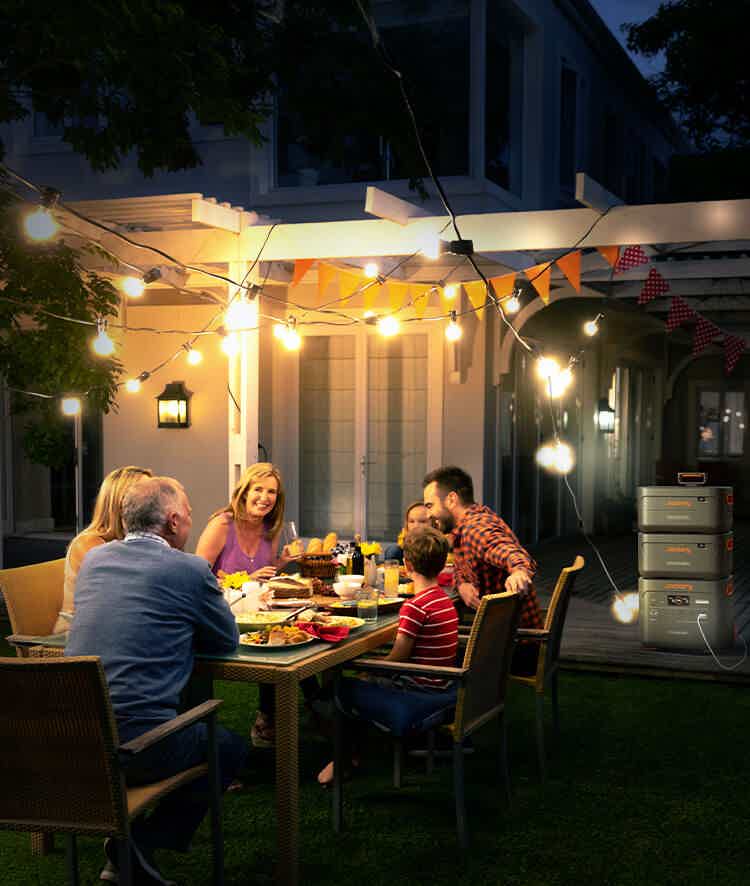|
Key Takeaways: |
|
- Camping fridges are now available in a wide range of forms, sizes, and variations and are incredibly popular in Australia for camping, caravans, trucks, utes, cars and 4WDs - Three popular varieties of camping refrigerators are available on the market. Compressor refrigerators, the most popular kind of portable refrigerators, are typically made to operate on compact, effective 12-volt (12V) or 24-volt (24V) batteries. - There are several sizes available for camping refrigerators, ranging from small (15L-20L) to medium (25L-50L) and big (65L-150L). - We recommend the Jackery Solar Generator 1000 Plus as the portable solar power supply for powering camping fridges no matter in a camping site or a vehicle. |
Camping Fridge Basics
A portable refrigerator is made to be transported with you wherever you go and is designed to run on very little power, typically from your car's 12V battery. Traditionally, portable refrigerators were fashioned as an open chest with a lid on top, similar to a refrigerated eski.
Camping fridges are now available in a wide range of forms, sizes, and variations and are incredibly popular in Australia for camping, caravans, trucks, utes, cars and 4WDs, isolated and off-grid places, perfect for ensuring that your food stays fresh and your drinks stay chilled wherever you go.
A portable camping fridge is a game-changer for outdoor activities like surfing, fishing, or camping in Australia. In addition to well-known applications like camping, caravanning, and travel, a portable fridge can be very helpful on a daily basis for keeping drinks cold, your lunch fresh, or your groceries frozen on the way home from the grocery store.
What Are the Benefits of Having a Camping Fridge?
With its ease and freshness, a camping fridge is a game-changer for outdoor excursions, enabling you to stay fueled wherever you go. Here are some of its key benefits:
Freshness: Unlike coolers, which can only keep food cold for a short time, a portable camping fridge keeps food fresh for longer lengths of time, enabling you to carry a wider variety of perishable foods, including vegetables, dairy products, and meat.
Durability: These refrigerators are designed to withstand harsh outdoor circumstances, with tough exteriors that withstand bumps, drops, and the elements. They are compact enough to be transported and carried easily.
Convenience: You can readily reach cold drinks, snacks, and supplies while camping without continuously refilling ice or dealing with wet stuff.
Types of Camping Fridges
Three popular varieties of camping refrigerators are available on the market. Compressor refrigerators, the most popular kind of portable refrigerators, are typically made to operate on compact, effective 12-volt (12V) or 24-volt (24V) batteries. These are the most often used portable refrigerators since they are made specifically for mobile use, can be powered effectively by the auxiliary battery in your car or vehicle, and can be readily set up to run on solar power in remote or off-grid areas.

Thermoelectric Portable Fridge
Since a thermoelectric refrigerator typically doesn't get as cold as a refrigerator, it functions more like a cooling box. The Peltier effect, which occurs when electricity flows through two separate conductors, is how they operate.
A metal plate will heat up if electricity is applied in a specific direction. It turns frigid if it moves in the other direction. A fan forces air from the cold plate to cool the box. These refrigerators are excellent for quick road trips and picnics. They are also widely used by truck drivers and couriers to keep lunches and beverages cool.
Compressor (Two-Way) Portable Fridge
Because of its excellent cooling efficiency and low current demand, compressor refrigerators are the most widely used camping refrigerators. Common brands with compressor-driven refrigerators include Engel and Dometic (formerly Waeco).
Simply said, refrigerated gas is pumped throughout the system by a compressor. Heat is extracted from the cabinet by compressing the gas into a liquid and sending it to the cooling elements, where it evaporates. The gas is pumped back into the compressor after releasing the heat through the outer fins. Compressor refrigerators can be used for 4WD driving, camping, or simply as an auxiliary refrigerator or freezer at home.
Three-Way Portable Fridge
A three-way refrigerator can be powered by 12-volt, 240-volt, or LPG gas. It is incredibly dependable and efficient when used properly. The absorption method, a completely sealed system that depends on heat for igniting, is how three-way refrigerators work. A "generator" heats water and ammonia before being sent to a "separator."
The ammonia gas and water are separated here. After rising to a "condenser," the ammonia gas cools to a liquid state, joins forces with hydrogen, and evaporates. By doing this, the cabinet's heat is eliminated. The solution then moves to an "absorber," where the ammonia and water mix to restart the cycle. Three-way refrigerators are perfect for prolonged stays at a shack or if you want to camp for an extended amount of time. They can also be used as caravan refrigerators and by 4WD drivers.
|
Camping Fridge |
Pros |
Cons |
|
Thermoelectric Portable Fridge |
- Tend to be more budget-friendly. - Typically, it consumes less power. - It is more lightweight than other types, which can be convenient for portability and ease of transport. - Don't use compressors, so they tend to be quieter than compressor fridges, making them a good choice if noise is a concern. - Don't require refrigerants or gases, therefore more eco-friendly than traditional fridges. |
- Not as powerful as compressor fridges, and they generally can’t get as cold. They are typically only effective at cooling items to around 40-50°F (4-10°C) below ambient temperature. - Less efficient in high temperatures. - Not great for long trips because they aren’t as efficient in high heat and can’t achieve deep cooling. - Can't freeze food or keep items frozen for long. - Rely heavily on a consistent power source to operate effectively. - Create heat on the back or bottom of the unit, requiring good airflow to avoid overheating and reducing efficiency. |
|
Compressor Portable Fridge |
- Excellent performance even in hot automobiles and hot weather. - Some can also serve as freezers. - Work on a slope or uneven surface. - It can be powered by a solar panel for use outside of a car. - Made to draw power from your car's battery efficiently and with minimal current. |
- When the outside temperature fluctuates, it might be challenging to maintain a constant temperature. - In peaceful campgrounds, compressor sounds could be audible. - Your refrigerator will stop working if the batteries are not charged regularly. - It will shut off overnight if it is powered by solar. - It might be necessary to buy AC adapters individually. |
|
Three-Way Portable Fridge |
- The most adaptable power sources. - Run on a single gas fill for a few weeks. - A complex dual-battery arrangement might not be necessary for you. - Nearly quiet. |
- It cannot be used for moving around all the time because it must be level to function. - When powered by 12 volts, it is inefficient and quickly depletes batteries. - Require enough air, making them unsuitable for caravans with tight seals. - Won't let you adjust the temperature; instead, it will cool to a specific level below room temperature. It works well in mild weather but not extremely hot or cold temperatures. - Are not as efficient as compressor refrigerators. |
What Size of a Camping Fridge Do You Need?
There are several sizes available for camping refrigerators, ranging from tiny (15L-20L) to medium (25L-50L) and big (65L-150L). We usually advocate purchasing the most miniature fridge possible rather than the most enormous fridge that will fit. A large fridge takes up more space, consumes more power, and is likely to spend the majority of its time in storage and not being utilised. Smaller and medium-sized fridges are suitable for day-to-day use, including between camping vacations.
Small Fridge – 15L-20L: Small fridges are frequently used as specialised beverage refrigerators or to store lunch or other items while travelling for work or leisure. Small portable fridges are typically kept somewhere convenient that can be reached on the go and are designed to fit in several easy-to-reach areas, such as a car's centre console, the centre of the rear bench seat as an armrest, the back footwell, or the trunk.
Medium Fridge – 25L-50L: Medium fridges are by far the most common choice because they give ample storage space, consume reasonable amounts of power, are not too heavy to transport, and take up little room. They can be used as a portable fridge or freezer, fit easily into a boot or under a truck cover, and are ideal for camping and other outdoor pursuits.
Large Fridge – 65L-150L: The largest refrigerators are only suitable for long-term trips, particularly when space and weight are not a concern. Some large portable fridge models include separate sections for the fridge and freezer.
Key Factors to Look for in a Camping Fridge
A camping fridge must be able to keep your food and drinks chilled while withstanding the harsh Australian environment. Here are things to think about when purchasing a camping fridge:

Insulation and Coolness: More insulation reduces electricity consumption and prolongs the cooling period. For additional insulation to keep everything cool, a cover is available separately and might be worthwhile. More vents translate into more effective cooling since they let heat escape. Verify that there is adequate room for air to circulate around the vents.
Durability: Choose a refrigerator that is built to last, with sturdy hinges and resilient casings, if it is likely to be subjected to bumps and shocks. Take it as a sign that the refrigerator is sturdy enough to hold someone standing on it.
One of the strongest plastics available is polypropylene, which is typically used to make camping refrigerators. You may be certain that it will last for many years to come. Check to determine if the refrigerator's lid can also support the weight of a person sitting on it. If necessary, find out how to purchase replacement parts.
Weather-Resistance: Look for portable refrigerators with additional weather protection if your refrigerator will be subjected to frequent dust, mud, and water splashes.
Mounting Hardware: Depending on where your refrigerator will reside and travel, you might want mounting hardware as a daring explorer. Mounting kits, whether for your car or caravan, will secure your refrigerator to avoid mishaps, guarantee optimal operation, and facilitate access to the fridge.
Battery Protection: Thanks to battery safety technology, the refrigerator will be safe to use with your automobile battery. Keep an eye out for variable protection, which guarantees the safety of both the compressor and your battery. High-voltage cutout models prevent your battery from dying.
How To Power Your Camping Fridge?
You might find it challenging to decide which of the numerous options for powering your camping refrigerator is best for your requirements.
|
Power Source |
Pros |
Cons |
|
Generator |
- Reliable power source. - Compatible with equipment other than the freezer and refrigerator. - Available in multiple capacities to satisfy your energy needs. - Perfect for short camping excursions. |
- Some national park campsites prohibit it. - Difficult to transport. - Need a fuel source. Noisy. |
|
Solar Energy |
- Free power source. - Economical. - Environmentally friendly. - Ideal for extended camping excursions. - Portable and easy to store. - Powers a variety of applications. |
- Requires an additional power source. |
|
Power Campsites |
- Convenient. - Dependable. - Requiring no additional baggage. |
- Limited choices. |
|
Battery |
- Suitable for a wide range of automobiles. - Quiet. - User-friendly. - Compact. |
- Requires planning and charging before the trip. - Limited capacity if not fully charged. - Car batteries may run out of power if improperly monitored. |
Using a solar generator to power a camping fridge offers several distinct advantages, particularly for those seeking off-grid adventures or reliable backup power. Solar generators utilise renewable energy from the sun, reducing your carbon footprint and reliance on fossil fuels. This aligns with environmentally conscious camping practices.

Jackery Solar Generator 1000 Plus for Camping Fridge
A camping fridge powered by the Jackery Solar Generator 1000 plus ensures that food and drinks stay cold for extended periods, reducing spoilage and the need for frequent restocking. It allows users to enjoy fresh food and cold beverages anywhere without relying on campsites with electrical hookups.
Maintaining proper food storage temperatures prevents bacterial growth, minimising the risk of foodborne illnesses during outdoor trips. Over the long term, using a solar generator, like Jackery Solar Generator 1000 plus, to power a camping fridge can be more cost-effective than constantly buying ice or relying on expensive campsite hookups. A typical camping fridge will consume 300W to 800W power, and let us see how Jackery 1000 plus run the camping fridge.

Explorer 1000 Plus features expandable capacity. The expandable design allows for the connection of up to three additional battery packs, enhancing its capacity to 5kWh, which is adequate for one to three days of backup power in a residential setting.
The Explorer 1000 Plus's recharging process is straightforward. The SolarSaga 100W can be recharged in 18 hours, while the SolarSaga 200W requires 9 hours for a full charge. It can be recharged using wall outlets in 1.7 hours and carports in 14.5 hours. The LiFePO4 battery cells offer an extended lifespan, supporting 4,000 charge cycles and ensuring reliable performance over a decade.
The Jackery App enables real-time monitoring and customisation via WiFi or Bluetooth. The Jackery 1000 Plus is designed for durability and efficiency, and it is supported by a 3+2 year warranty that assures users that they will adopt sustainable energy solutions.
The Jackery SolarSaga 100W Solar Panel efficiently converts solar energy into renewable power using a monocrystalline solar cell. Its solar conversion efficiency of 23.7% makes it particularly suitable for outdoor applications and unforeseen power interruptions. The ETFE-laminated case enhances the solar panel's durability and weighs 4.69 kg. The item is characterised by its lightweight design, foldability, IP65 waterproof rating, and portability, making it suitable for off-grid excursions.
|
Camping Fridges |
Running Time |
|
Small Portable Fridge (300W) |
2.8H |
|
Medium-Size Camping Fridge (500W) |
1.7H |
|
Large Compressor Fridge (800W) |
1.1H |
(*The working hours are only for reference; the actual working hours depend on your usage.)
Tips to Enhance Camping Fridge Efficiency
Use techniques that make your camping fridge run efficiently to avoid any powering issues. You have the following options:

Select a refrigerator that uses less energy. To extend the shelf life of your food and beverages, look for refrigerators with high energy ratings and low power use.
Pre-cool your fridge. Pre-cool your camping refrigerator at home before turning it on. On the evening before your travel, start by connecting it to the mains. This ensures that your camping fridge batteries won't waste energy cooling down a warm interior and enables your fridge to achieve the ideal temperature. Before packing, make sure everything you intend to keep in the refrigerator is already cold. By doing this, you can maintain a safe temperature for your refrigerated goods while also saving more electricity.
Reduce temperature fluctuations and restrict door openings. The refrigerator needs power to re-adjust the temperature whenever the door is opened, or the temperature is altered. Any needless power use can be avoided by minimising them.
Use insulative covers. Purchasing a lightweight, insulating refrigerator cover for your camping refrigerator can make all the difference. By keeping the cold air within the fridge, these covers assist in lowering the energy needed to cool the inside. Additionally, they guard against outside heat simultaneously, which lessens the load on your portable refrigerator's power source.
Ensure proper ventilation. Ventilation is a frequently disregarded component in maximising the functionality of your camping refrigerator. Battery life can be increased by making sure your refrigerator has adequate ventilation. Enclosing your refrigerator in a closed, cramped area, such as a car trunk, for extended periods of time may seem paradoxical, but it can cause overheating and increase power consumption. Instead, always keep your refrigerator's vents open to ensure optimal performance.
Camping Fridges FAQs
The following are the frequently asked questions about the camping fridges in Australia:
1. How long will a 100Ah battery run a camping fridge?
A refrigerator that uses an average of 167 watts might be powered by a 100Ah 12v deep cycle battery for about six hours under ideal circumstances (assuming no losses).
2. Will a 200W solar panel run a 12V fridge?
A 12V refrigerator uses 40 to 80 watts per hour on average, depending on its size, insulation, and efficiency; given that the refrigerator cycles on and off during the day, a 12V refrigerator requires an average between 320 and 640 watt-hours. Solar panels can efficiently power these 12V refrigerators with ratings of 100W, 200W, or more.
3. How long can you run a camping fridge?
As long as your power is sufficient! Your camping refrigerator will continue functioning as long as you maintain a connection to an appropriate power source.
4. How long will a 120Ah lithium battery run a fridge?
If a 12V camping refrigerator uses 1-2 amps per hour, a 120Ah lithium battery can usually run it for 24 to 48 hours. The refrigerator's power consumption, the outside temperature, and the duty cycle (the frequency of compressor operations) can all affect this time.
5. Can a 1000W inverter run a fridge?
Yes, a 1000W inverter can probably power a portable or compact fridge. Still, a standard-sized house refrigerator cannot because of its higher power usage, especially when it first starts up.
Final Thoughts
Nothing compares to relaxing with a cold drink in your hand while enjoying the peace and quiet on your camp chair. Furthermore, fresh food prepared over a campfire or camp stove will always outperform canned or premade meals. A camping fridge is all you need to accomplish this. It might be challenging to decide which camping refrigerator or cooler is best for your needs, whether you're new to camping or want to replace your current setup. You can always trust Jackery Solar Generators to power your camping fridge.

